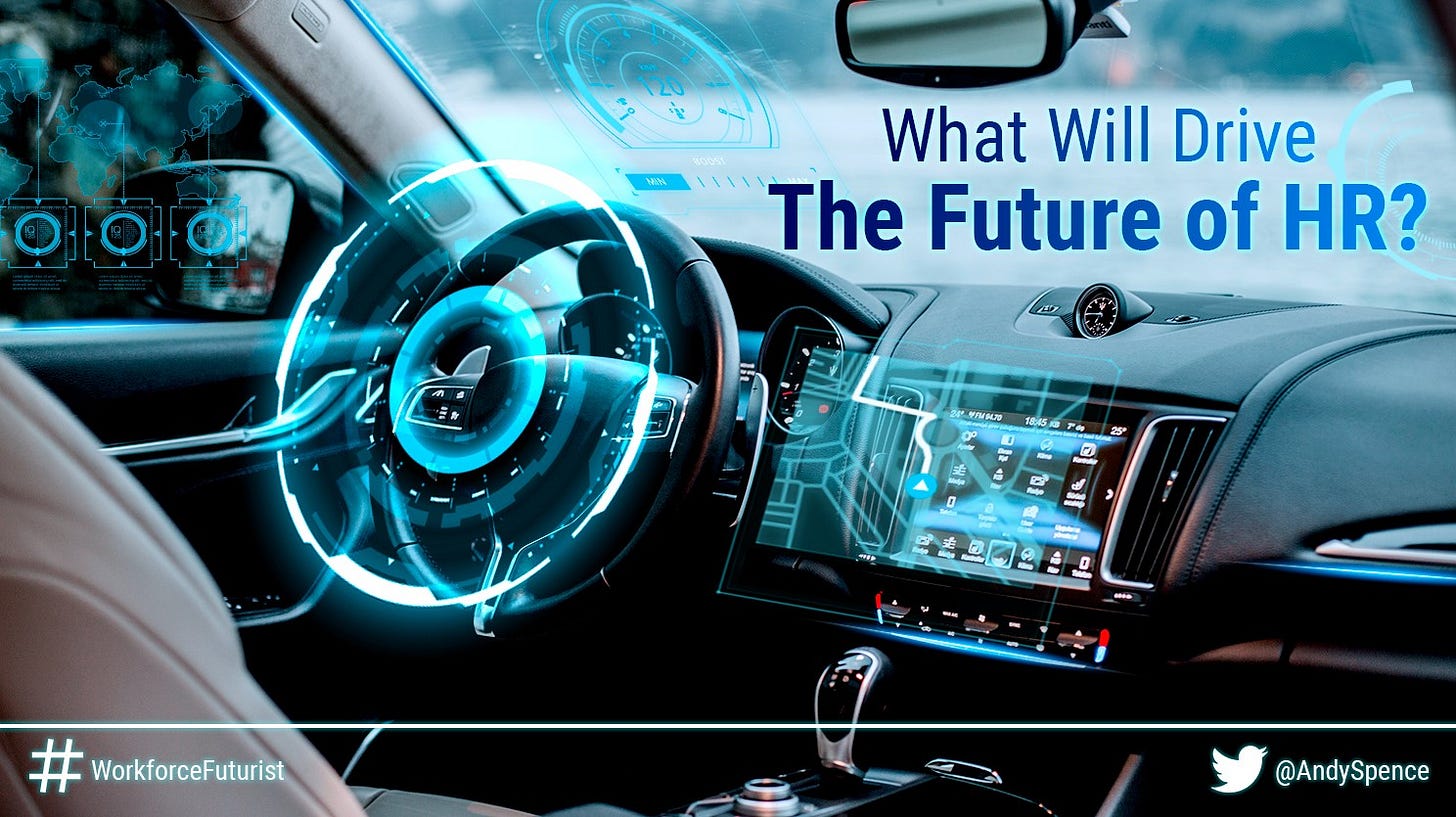This is the Workforce Futurist Newsletter about the rapidly changing world of work. Please subscribe if you don’t already for regular posts and longer essays direct to your inbox every week.
The way we manage people in organizations has always been influenced by forces external to the HR function. The biggest driver of new HR operating models from the 1990s was not from a particular book or influencer, but from what was going on outside of HR.
The big industry developments shaping our functions were in enterprise software, shared services, account management, and the pressure to demonstrate value. These developments directly changed IT, Finance, and HR, in different ways.
In thinking about people management for the next decade, again, we need to look outside of HR.
What are the drivers of change that will shape how we think about and deliver workforce solutions in the next decade?
In the Digital-Covid age, the economic response to the pandemic will shape what our industries and companies will look like in the next few years. Whether we have pay freezes, inflated salaries, or lay on programs to reduce attrition of key staff. The subsequent impact on supply and demand for labor will dictate many of our HR tactics.
The workforce has changed substantially in expectations, attitudes, and also ways of earning, learning, and spending our leisure time. The digital age has changed the competitive dynamic between our leisure time and our working time. We now have platforms where teachers and coaches can directly engage with their clients and where live-streamers can earn millions from their Twitch and YouTube channels. This will require new workforce strategies to attract and retain workers.
In an age where Google has structured our data, in work we still use the humble resume, invented by Leonardo Da Vinci in 16th Century Italy. This means the quality of our career data is poor, making it hard to find suitable candidates, and for workers to find work. A new infrastructure for work is being built by the technology and staffing industry, using blockchain and AI technology. The new infrastructure will allow people to have sole ownership of their digital identities and career credentials in secure digital wallets. Over time more efficient and fairer peer-to-peer work matching platforms will mean there is a more direct relationship between employer and worker.
In the 2020s as work unbundles, it will rebundle into interesting new forms. We will see an increasingly decentralized workforce earn more from work platforms, bringing more diverse groups into the economy. This will unleash networks of teams to accomplish work projects.
The work to find and contract with new workers for teams will be automated using insights from a broad set of data. This will enable more frequent and frictionless matching between people with skills and work to be done.
In this scenario, the role of a people function will include supporting diverse self-sufficient teams using workforce technology, to ensure compliance and that company strategy is being delivered. Instead of using the management processes we inherited from the last century, leadership will involve nurturing talent networks.
When thinking about the future of people management today, like in the past, it is helpful to focus on the emerging changes in our society, how organizations are changing, workforce economics, and wider technological changes.
Further Reading
Blockchain and the Chief Human Resources Officer – Transforming the HR Function and the Market for Skills, Talent and Training – PDF Report with a foreword from Don Tapscott.
Author Bio
Andrew Spence is an experienced Workforce Strategist - follow @AndySpence on Twitter.
Originally published as the cover article for HR Strategy and Planning Excellence (Vol 09 No 03) for HR.com




